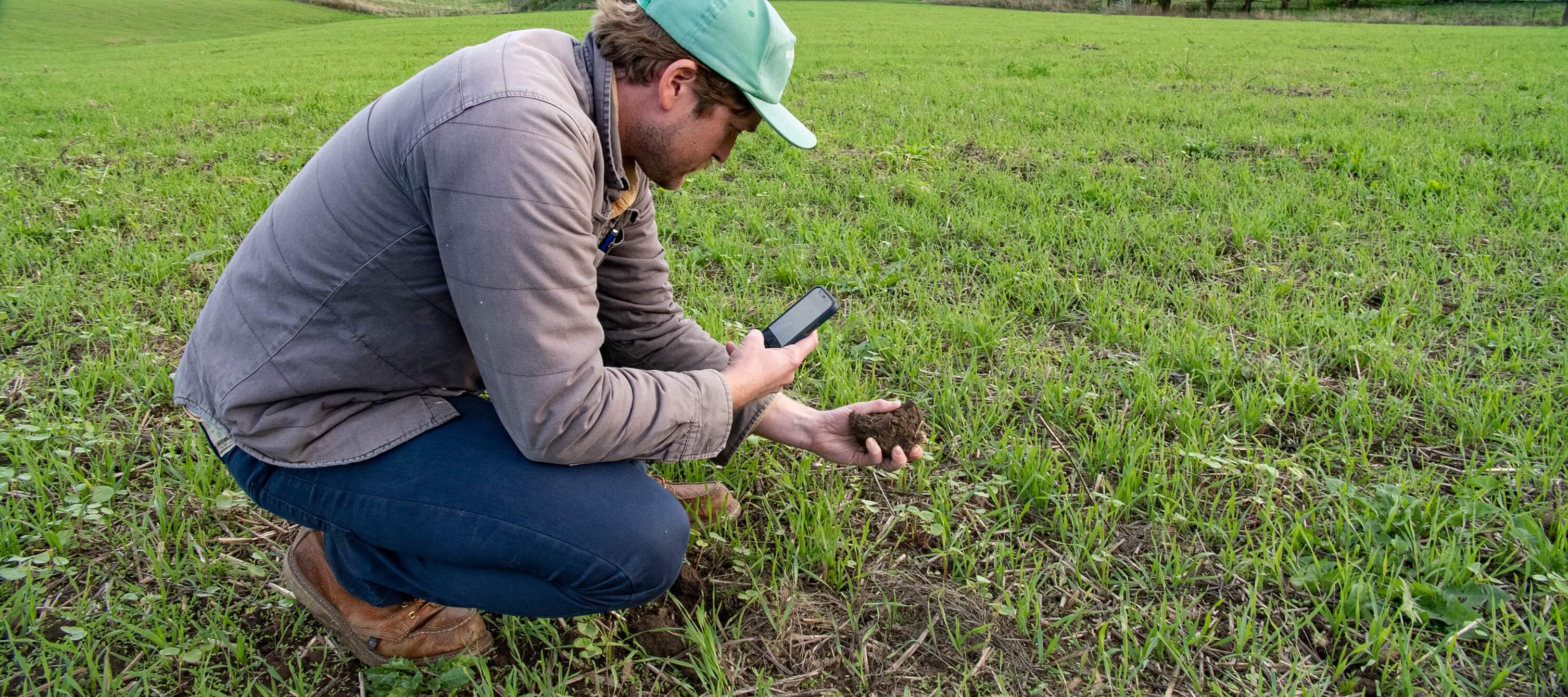Improve fertilizer efficiency to reduce costs
by Ryan Stockwell
Understand fertilizer losses and strategies to improve fertilizer efficiency and their impacts on farm profitability.

When it comes to typical commodity markets like corn, being the low cost producer is often the name of the game. Finding efficiencies is critical to maintaining production while reducing costs. Nowhere is that more applicable than with fertilizer. In most corn production budgets, fertilizer represents around half of all input costs. Nitrogen fertilizer alone often accounts for 25% of all input costs. Combined with the fact that almost half of all nitrogen applied is lost or wasted presents a significant opportunity for finding gains to reduce that fertilizer cost while maintaining productivity. Understanding nitrogen loss pathways and their causes only reinforces the value and return of building healthy soil through carbon farming practices.
Common fertilizer efficiency killers
- Volatilization is the loss of nitrogen fertilizer when it converts from a solid or liquid to a gas before it can get absorbed into the soil and taken up by plants. This occurs when nitrogen fertilizer is placed on the soil surface and is exposed to sunshine before the fertilizer is incorporated into the soil. If topdressed nitrogen fertilizer is not incorporated into the soil by tillage or rain, and air temperatures remain above 70 degrees, up to 60% of applied nitrogen can be lost.
- Denitrification is the conversion of nitrate and water into nitrous oxide, often occurring under saturated soil conditions. This often occurs in heavy clay soils that experience ponding. Saturated soils lose around 5% of applied nitrogen per day, but can lose 20% per day when soil temperature is above 75 degrees.
- Leaching occurs when nitrogen attaches to water and then travels down and out of the root zone, often occurring in sandy soils. This can occur especially over an extended period of rain. In one study in Nebraska, an 8-day period of wet weather caused almost all applied nitrogen to leach out of the root zone.
Effective solutions to reduce these fertilizer losses
- Application Type: Growers can reduce risk of volatilization by injecting or side-dressing nitrogen, or by applying nitrogen to soil that is covered by growing plants. Cover crops create more opportunity to capture nitrogen from both fertilizers and manure. They also provide valuable benefits to soil health and soil structure.
- Soil Management: While we often like to blame extended rain for saturated soils, how we manage our soils can impact just how long our soils remain saturated. Improving soil structure through reduced tillage, adding cover crops, or adding perennial crops to the rotation can dramatically improve infiltration and structurally reduce the risk of denitrification.
- Applying into Vegetation: Solving leaching in the short term requires having growing plants in the soil to take up nitrogen. This can mean shifting more nitrogen applications to in-season, but particularly adding cover crops. In the long term, improving soil organic matter will increase the soil’s ability to absorb nitrogen. Here again cover crops, no till, and perennial crops are essential tools.

Which cover crops are right for me?
Answer a few questions about your operation to get a personalized cover crop recommendation.
In all cases, improving soil organic matter and soil structure will reduce the risk of nitrogen loss. The best strategies to reduce nitrogen loss are to reduce tillage and add cover crops. The challenge of high cost fertilizer will always occur with high commodity prices. In an increasingly competitive global commodity market, profitability goes to those who structurally improve input efficiency. Adding cover crops and reducing tillage can provide that competitive advantage while generating carbon credits.
By Ryan Stockwell, Indigo Ag Senior Manager of Grower Engagement and Wisconsin Farmer
Citations
-https://www.noble.org/news/publications/ag-news-and-views/2009/may/nitrogen-losses-from-urea/#:~:text=There%20are%20many%20thoughts%20regarding,and%20lost%20as%20a%20gas
-https://webapp.agron.ksu.edu/agr_social/m_eu_article.throck?article_id=2207
-https://crops.extension.iastate.edu/cropnews/2011/06/estimating-nitrogen-losses
This article may include information from third-party sources or other information that Indigo may not independently verify. Carbon quantification methods, processes and understandings are in their nascency and subject to change and continuous development. The information contained herein is for general informational purposes only and may be based on generally applicable assumptions that may not be applicable to any individual operation. Actual results may differ among growers and farms based on a large number of variables. Each operation should independently consider the financial implications and all potential risks and benefits of the use of any agronomic practice. Any payments under Carbon by Indigo are subject to multi-year vesting and are contingent on continued long-term maintenance of regenerative agricultural practices and soil carbon levels. All Carbon Credits generated are subject to buffer pool holdbacks required by third-party crediting; participants will not receive payments for such holdback. Neither Indigo nor its representatives or affiliates makes any representations, warranties or guarantees as to any specific outcomes (agronomic, financial or otherwise) in connection with any recommendations, calculations or predictions. Terms, conditions, limitations and eligibility requirements apply. See program agreement for additional details regarding Carbon by Indigo.
Farmers like you are getting paid to implement practices that improve soil health. With skyrocketing input costs, see how covers help.
You might also be interested in:
Neither Indigo nor any of its affiliates makes any representations, warranties or guarantees as to any specific results or outcomes, including, without limitation, with respect to soil health outcomes or any minimum amount of greenhouse gasses sequestered or number of carbon credits generated. Participation in Carbon by Indigo is subject to the terms, conditions and limitations of the program contained in the applicable enrollment agreement. Any payments under Carbon by Indigo are subject to multi-year vesting and are contingent on continued long-term maintenance of regenerative agricultural practices and soil carbon levels. All Carbon Credits generated are subject to buffer pool holdbacks required by third-party crediting; participants will not receive payments for such holdback. Not available in all areas.
500 Rutherford Ave, Boston, MA 02129 | 844.828.0240 | info@indigoag.com